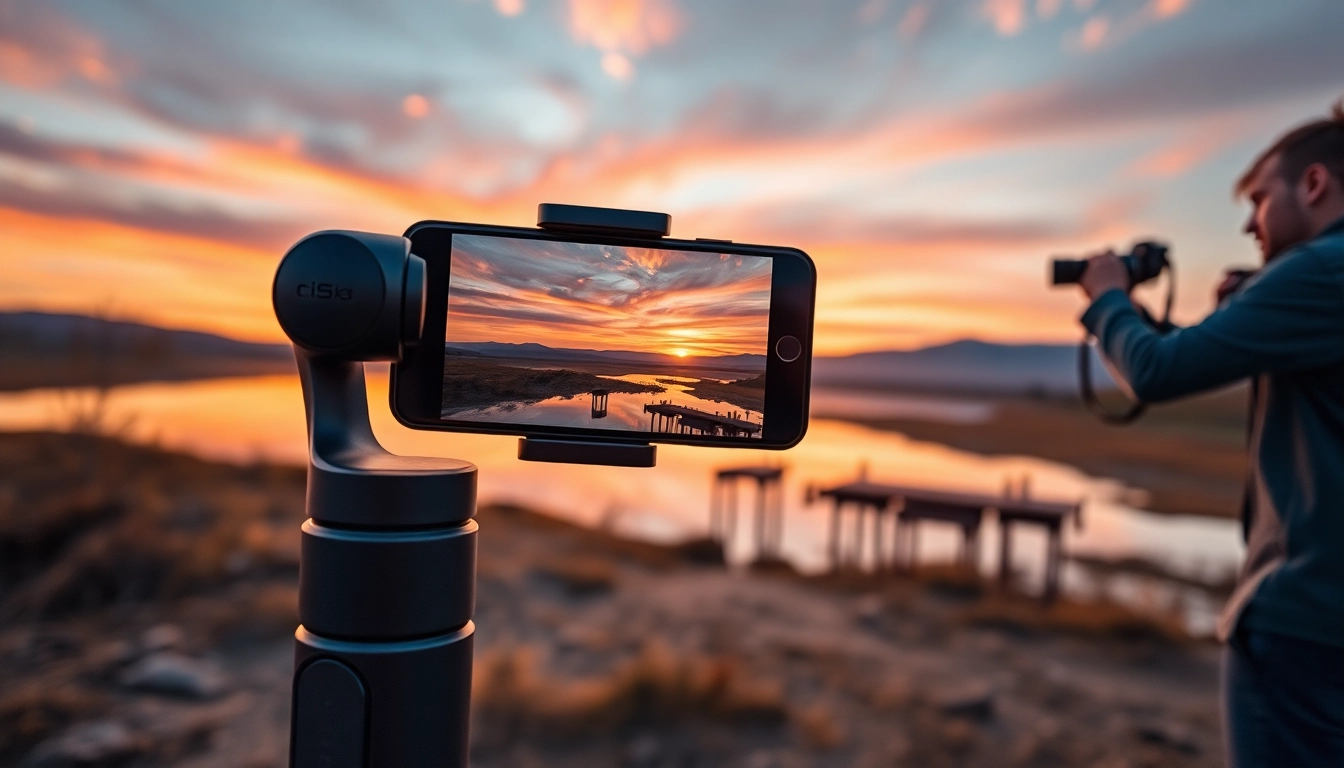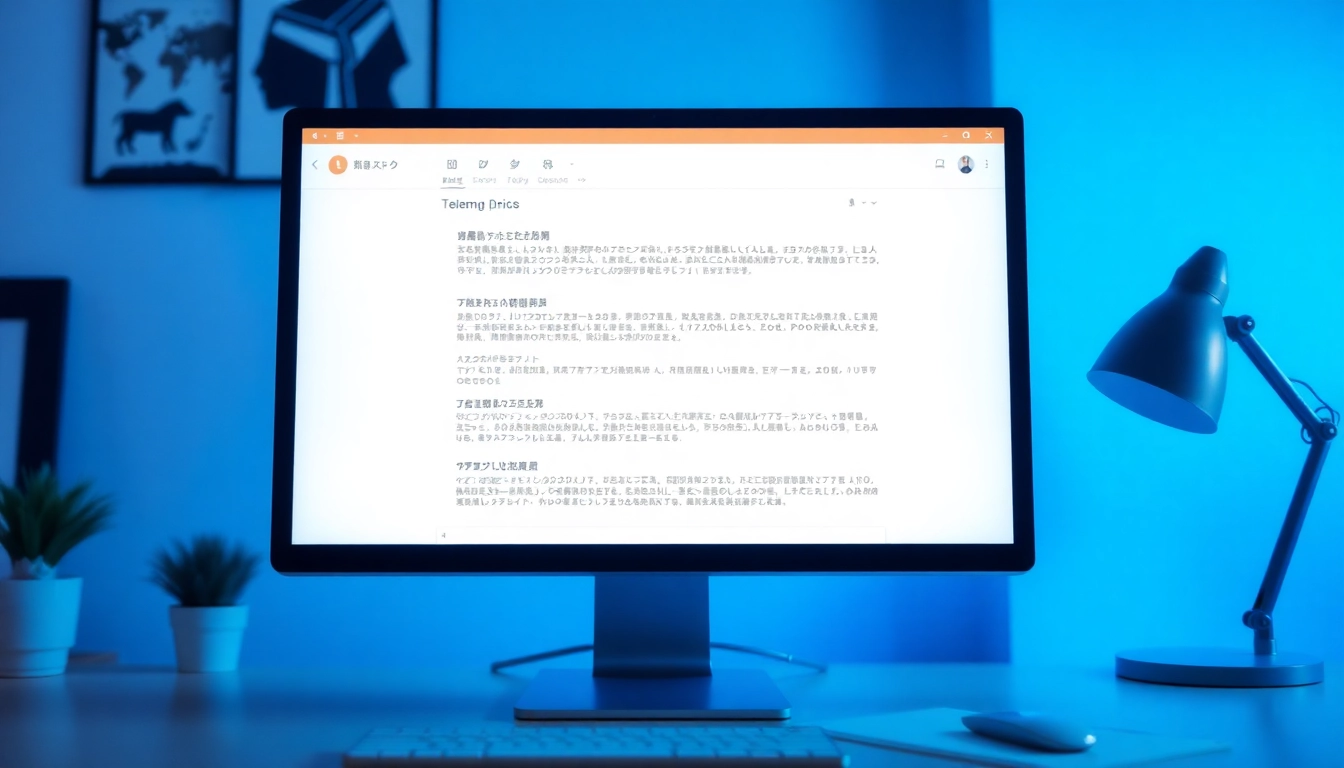Understanding the Gimble Concept
Defining the Gimble: Features and Functions
A gimble is a critical tool in the world of videography and photography, specifically designed to stabilize cameras and smartphones. Essentially, it is a pivoted support that allows an object to rotate around an axis, which is vital for capturing smooth and professional-quality footage. The primary function of a gimble is to counteract unwanted movements, making it easier for users to capture steady images and videos, regardless of the environment or conditions.
Common features of a gimble include adjustable arms, stabilization motors, and various modes of operation that can accommodate different shooting preferences. By utilizing a combination of mechanical and electronic stabilization, a gimble significantly reduces the impact of shaking or vibrations, allowing for a much smoother video experience. For those looking to enhance their video quality, understanding the features and functions of a gimble is essential.
Types of Gimbles and Their Applications
There are several types of gimbles, each with specific applications catering to different needs. The most common types include:
- 1-Axis Gimbles: These provide stabilization along one axis, mainly used for simple pan movements. Ideal for basic video applications.
- 2-Axis Gimbles: Offering stabilization along two axes, these are suitable for achieving smoother tilting and panning effects.
- 3-Axis Gimbles: The most popular choice among professionals, 3-axis gimbles provide stabilization across pitch, roll, and yaw, making them versatile for various shooting environments.
- Handheld Gimbles: Designed for mobile devices, these are lightweight and portable, making them perfect for vloggers and casual users.
- Camera Gimbles: More robust and designed for DSLRs or mirrorless cameras, these typically offer advanced features tailored for professional videography.
The application of gimbles extends beyond personal use; they are widely utilized in sectors such as filmmaking, live broadcasting, and even in the creation of virtual reality content, where stabilization is crucial for immersive experiences.
The Importance of Stabilization in Video Recording
In both amateur and professional video recording, stabilization is essential. Shaky footage can distract viewers and diminish the overall quality of the content. High-quality production values depend significantly on smooth camera movements, which can be achieved with the help of a gimble.
Furthermore, stabilization allows creators to push creative boundaries. By enabling dynamic movements during filming—such as walking shots, high-speed actions, or overhead angles—a gimble expands the possibilities for storytelling. This versatility can elevate the visual narrative, engaging the audience and enhancing their experience.
Choosing the Right Gimble for Your Needs
Key Factors to Consider When Selecting a Gimble
When choosing the right gimble, it’s crucial to consider several factors that will affect its performance and suitability for your specific needs. These factors include:
- Payload Capacity: Understanding the weight limits of a gimble is essential. Ensure that it can support the weight of your camera or smartphone, along with any additional accessories you might use.
- Battery Life: Depending on your projects, battery life can be a deciding factor. Long-lasting batteries will allow for extended shooting without interruptions.
- Adjustability and Flexibility: A gimble’s design should allow for easy adjustments to suit various shooting styles and environments. Look for features that enable quick mount and dismount for convenience.
- Portability: If you travel frequently or require on-the-go shoots, lightweight and compact gimbles are more advantageous.
- User Interface: An intuitive interface will enable you to understand operation modes quickly and make necessary adjustments during filming.
Gimble Compatibility with Smartphones
Smartphone gimbles are increasingly popular due to the rise of mobile photography and videography. It is vital to ensure compatibility with your device, considering not only size and weight but also the specific model and its features.
Some gimbles come with adjustable clamps or mounts to accommodate a wide range of smartphones. The best gimble options offer dedicated application integration, allowing users to access various shooting modes directly from their mobile devices. Features such as face tracking, object tracking, and time-lapse photography enhance the overall user experience when using a gimble with smartphones.
Budget Considerations for Gimble Options
Pricing for gimbles can vary dramatically based on features, brand, and build quality. Setting a budget before making a purchase is advisable to narrow down your options effectively. While higher-end gimbles come with advanced features and greater durability, there are also budget-friendly options available that still deliver impressive performance.
Consider your personal needs and the frequency of use when determining how much to invest in a gimble. For novice users or those shooting primarily for social media content, more affordable models may be perfectly sufficient. In contrast, professional videographers often benefit from investing in higher-quality, feature-rich gimbles.
Mastering Your Gimble: Tips and Techniques
Basic Operating Procedures for Effectiveness
Once you’ve selected your gimble, understanding how to operate it effectively is key to maximizing its potential. Start with the basic operating procedures:
- Ensure the gimble is fully charged before use.
- Balance your camera or smartphone according to the manufacturer’s guidelines to prevent motor strain.
- Select the appropriate mode based on your shooting style, be it follow mode, lock mode, or pan mode.
- Practice your movements—smooth, deliberate motions yield the best results.
- Utilize the various features, such as time-lapse or hyper-lapse, to explore creative options.
Common Mistakes to Avoid with Gimbles
Many users encounter common pitfalls when using gimbles for the first time. Avoid these mistakes to enhance your shooting experience:
- Neglecting to Balance: Skipping the balancing step can lead to poor stabilization results and strain on the motors.
- Overloading the Gimble: Exceeding the weight limit can cause malfunctions and decreased effectiveness.
- Improper Settings: Failing to adjust settings according to your environment and shooting style can negatively affect your footage.
- Ignoring Maintenance: Regular cleaning and care are essential for the longevity and functionality of your gimble. Regularly check for any mechanical issues or dirt that can affect performance.
Advanced Techniques for Professional Use
For those looking to elevate their videography skills, mastering advanced techniques with a gimble is crucial. Here are a few strategies:
- Dolly Zoom Technique: This involves moving closer or away from the subject while adjusting the zoom to maintain the same size. It creates a dramatic effect and visually engaging composition.
- Orbiting Shots: Move around a subject while maintaining a steady shot, providing depth and dynamic interest to the footage.
- Low-Angle Shots: Experiment with shooting from low angles for a unique perspective, particularly when filming action scenes or dynamic movements.
- Cinematic Moves: Incorporate sweeping pans and sliders using the gimble’s range of motion to create cinematic appeal.
Maintaining Your Gimble for Longevity
Cleaning and Care Tips for Gimbles
Regular cleaning and care will prolong the life of your gimble and maintain peak performance. Follow these tips:
- Wipe Down the Unit: Use a soft, lint-free cloth to remove dust and residues after each use to prevent buildup.
- Check for Loose Screws: Periodically inspect your gimble for any loose components that could affect functionality.
- Avoid Exposure to Moisture: Store your gimble in a dry environment to prevent internal damage due to humidity or exposure to water.
Upgrading Parts for Better Performance
To further enhance your gimble, consider exploring upgrade options. Some manufacturers offer interchangeable parts or accessories designed to improve functionality. Popular upgrades include:
- Additional Batteries: Having spare batteries on hand can extend shooting time without interruptions.
- Custom Mounts: If you frequently switch devices, specialized mounts can save time and effort in setup.
- Weighted Feet: For handheld options, consider adding weights for improved stability during dynamic shots.
When to Replace Your Gimble
Knowing when it’s time to replace your gimble can prevent inconveniences during crucial shoots. Signs that indicate a need for replacement include:
- Frequent Mechanical Issues: If your gimble repeatedly malfunctions or fails to stabilize effectively, replacement may be the best option.
- Incompatibility with New Devices: Upgrading your camera or smartphone often necessitates a new gimble that matches the latest specifications.
- Physical Damage: Any visible damage, such as cracked arms or faulty motors, can affect performance and warrant a replacement.
Gimble Community and Resources
Joining Online Forums and Groups
The videography community is vast and supportive, with numerous online forums and groups dedicated to gimbles and related technologies. Engaging with these communities allows individuals to share experiences, tips, and techniques, which can enhance your understanding and skill set.
Popular platforms where users connect include social media groups, Reddit threads, and photography forums. Participating in these discussions can provide invaluable insights and foster connections with other enthusiasts and professionals alike.
Recommended Tutorials and Video Resources
Many resources are available to help new users master their gimbles, including video tutorials and detailed guides. Video platforms such as YouTube feature engaging content where experienced videographers share advice on operating techniques, creative uses, and troubleshooting common issues.
In addition to tutorials, consider joining online classes or workshops that focus on videography, as they often include sections dedicated to mastering gimbles and stabilizers.
Staying Updated with Industry Trends
The videography industry is constantly evolving, with new technologies, features, and trends emerging regularly. Staying informed about these developments is crucial for any serious videographer. Subscription to relevant blogs, journals, and podcasts ensures you remain ahead of the curve and can adapt your techniques and equipment accordingly.
Moreover, attending industry events, trade shows, and expos can provide firsthand information about the latest innovations in gimbles and other filming equipment, offering opportunities to network and learn from industry leaders.



